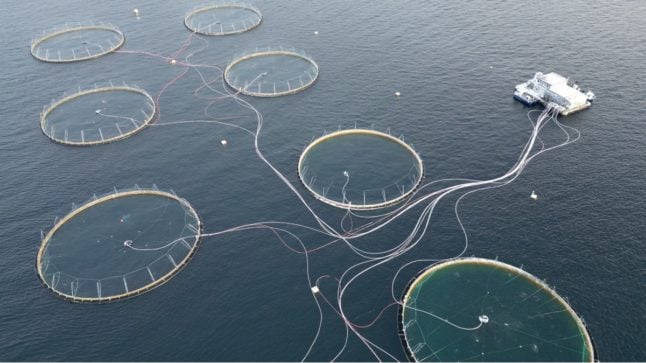Under the project, run by the Norwegian Defence Research Establishment (FFI) each summer since 2021 minke whales are captured in the Lofoten
archipelago and submitted to hearing tests before they are released into the wild again.
They are run in cooperation with the US National Marine Mammal Foundation. The experiments, aimed at gathering knowledge in order to set limits on how
much noise humans should be allowed to make in the ocean, have been criticised by animal rights defenders and scientists who consider the project dangerous.
In the night between June 2nd and 3rd, bad weather damaged the project testing site, causing a barrier line to break free. A whale became entangled in it and died, the FFI said.
The incident occurred before the official start of this year’s experiments. The project has been put on hold indefinitely while the incident is
reviewed and the site repaired.
“Our aim is to protect Minke whales and other baleens, and to protect them from harmful human-made noise,” Petter Kvadsheim, chief researcher at FFI,
said.
“We will continue our work on this. The health of the animals is our main priority in this experiment.”
The project had been due to continue until the summer of 2024. In an interview with AFP, Kvadsheim blamed the incident on bad weather
rather than the experiment, and said he hoped the project could resume “in the next few days”.
“It’s never been done before and unexpected things can happen,” he said, adding that it was unfolding “step by step” and “on schedule”. He said only “a handful” of whales were needed to complete the project.
One whale entered the testing site the first year, in 2021, but it quickly escaped. In 2022, another minke was captured but it was released immediately because it showed signs of stress.
“We have warned that these cruel and pointless experiments would lead to whales being killed and it is sadly ironic that this poor minke has died even before the experiments have got underway,” said a spokesman for the Whale and Dolphin Conservation, Danny Groves.
“No whales should have to face being bundled into a cage and have electrodes implanted under his or her skin. These experiments should be halted
permanently,” he added.
In 2021, 50 international scientists had written to the Norwegian government to protest against the experiments.



 Please whitelist us to continue reading.
Please whitelist us to continue reading.
Member comments